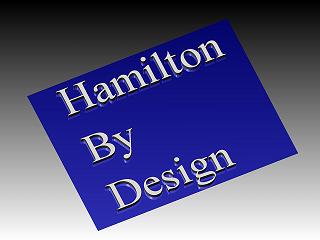Designing reliable bulk materials conveyor transfer station chutes involves adhering to several key principles to ensure efficient, durable, and safe material handling. Engineers use various software tools to aid in this process, helping to simulate, design, and optimize chute performance. However, despite the available technology and design principles, there are common pitfalls that must be avoided. Here’s an in-depth look into these aspects.
Key Principles of Designing Reliable Conveyor Transfer Station Chutes
1. **Material Flow Dynamics:**
- **Controlled Flow:** It's critical to ensure that material flow is smooth and predictable. Chutes should be designed to guide material efficiently from one conveyor to another without causing blockages or excessive wear.
- **Optimal Angles:** The chute's slope must be carefully chosen. Too steep, and material may accelerate too quickly, causing damage; too shallow, and it may not flow freely, leading to blockages.
- **Trajectory Management:** Proper trajectory management is crucial to minimize wear and spillage. The material should ideally land on the receiving conveyor in the direction of its movement to reduce impact.
2. **Wear Resistance:**
- **Material Selection:** Using high-quality, wear-resistant materials is essential. Options like AR (abrasion-resistant) steel or liners made from ceramic, rubber, or specialized composites can prolong the chute’s life.
- **Reinforced Wear Points:** Areas subjected to high impact and friction should be reinforced. This includes the impact zones where material first contacts the chute and high-wear areas where material changes direction.
3. **Dust and Spillage Control:**
- **Sealing:** Effective sealing around the chute prevents dust and material from escaping, which is crucial for both environmental and operational reasons.
- **Dust Suppression:** Implementing dust suppression systems, such as water sprays or dust extraction units, can significantly reduce airborne particles, enhancing safety and cleanliness.
4. **Maintenance and Accessibility:**
- **Ease of Access:** Designing chutes with maintenance in mind ensures that routine inspections and repairs can be carried out efficiently without excessive downtime.
- **Modular Components:** Using modular design principles can make it easier to replace worn parts, thus minimizing maintenance time and cost.
5. **Structural Integrity:**
- **Robust Design:** The chute must be designed to withstand the dynamic loads and impacts of bulk material. This involves ensuring the structure is adequately reinforced and capable of absorbing vibrations and shocks.
- **Vibration and Impact Resistance:** Designing to mitigate vibrations and impacts can help reduce structural fatigue, prolonging the chute’s operational life.
6. **Flow Rate Compatibility:**
- **Capacity Matching:** The chute should be designed to handle the flow rate of the conveyors it connects. Overloading can lead to blockages and spillage, while underloading indicates inefficiency.
Software Tools Used in Design
Engineers use a variety of software tools to assist in designing conveyor transfer station chutes. These tools help in simulating material flow, analyzing wear patterns, and optimizing the design for efficiency and durability. Key software includes:
1. **Discrete Element Method (DEM) Software:**
- **Examples:** EDEM, Rocky DEM, and Bulk Flow Analyst.
- **Function:** These tools simulate the flow of bulk materials to predict how they will behave within the chute, helping to optimize design for efficient material handling and minimal wear.
2. **Computer-Aided Design (CAD) Software:**
- **Examples:** AutoCAD, SolidWorks, and Inventor.
- **Function:** CAD software allows engineers to create detailed 3D models of the chute, enabling precise design and easy integration with other system components.
3. **Finite Element Analysis (FEA) Software:**
- **Examples:** ANSYS, Abaqus.
- **Function:** FEA software is used to analyze the structural integrity of the chute, ensuring it can withstand the loads and stresses imposed by the bulk materials.
4. **CFD (Computational Fluid Dynamics) Software:**
- **Examples:** Fluent, CFX.
- **Function:** While primarily used for fluids, CFD software can also help in analyzing dust behavior and optimizing dust control measures in chute design.
Pitfalls to Avoid
Despite the availability of advanced design principles and software, several common pitfalls can compromise the reliability and efficiency of conveyor transfer station chutes:
1. **Incorrect Angle of Inclination:**
- **Blockages and Spillage:** An angle that is too steep can cause uncontrolled flow, while too shallow can lead to material build-up, resulting in blockages.
2. **Insufficient Wear Protection:**
- **Premature Wear:** Neglecting to use wear-resistant materials or failing to reinforce high-wear areas can lead to frequent maintenance and costly downtime.
3. **Poorly Designed Transitions:**
- **Material Segregation:** Abrupt transitions or poorly designed junctions can cause material segregation, uneven flow, and increased wear on the chute and conveyor components.
4. **Inadequate Dust Control:**
- **Environmental and Health Issues:** Neglecting dust control can lead to significant environmental and health problems, as well as potential regulatory fines and operational inefficiencies.
5. **Maintenance Challenges:**
- **Difficult Access:** Designing chutes without considering maintenance access can result in extended downtime and increased labor costs during repairs and inspections.
6. **Ignoring Dynamic Loads:**
- **Structural Failures:** Not accounting for the dynamic loads and impact forces exerted by the bulk materials can lead to structural failures and hazardous conditions.
7. **Poor Integration with Conveyor System:**
- **Operational Inefficiencies:** Failing to properly integrate the chute design with the conveyor system can lead to operational inefficiencies, increased wear on conveyor components, and potential system failures.
By adhering to these principles, utilizing appropriate software tools, and being mindful of common pitfalls, engineers can design reliable and efficient conveyor transfer station chutes that enhance material handling operations.
Mechanical Engineering | Structural Engineering
Mechanical Drafting | Structural Drafting
3D CAD Modelling | 3D Scanning
Hamilton By Design

